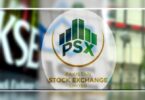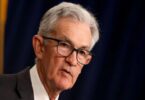NEW YORK (THE HILL): The U.S. economy defied expectations in almost every way as it continued to recover from the deepest downturn since the Great Depression. Unprecedented federal stimulus and breakthroughs on COVID-19 vaccines helped power the U.S. job market, wages, stock prices and consumer spending far beyond what economists’ projected, but also fueled the highest inflation rate in four decades.
While economists expect another year of solid growth in 2022, the U.S. will still face challenges and obstacles driven by the pandemic.
Here are the five big questions that will define the U.S. economy next year. The December spike in COVID-19 cases driven by the omicron variant has prompted a wave of cancelled events, postponed travel plans, temporary business closures and tighter health protections. While those who’ve been vaccinated and boosted are still unlikely to face serious illness, the omicron surge has created deep concern and uncertainty for the recovering economy.
The economic impact of the omicron variant will likely depend on whether it actually causes less severe disease than previous variants—including delta, which slowed job growth and boosted pressure on supply chains this summer. “The growth hit likely will be less severe than in the summer of this year, when Delta hit” wrote Ian Shepherdson, chief economist at Pantheon Macroeconomics, in a Tuesday analysis.
“But we can’t rule out the idea that hospitals in some states will be overwhelmed, because
Omicron spreads so quickly that even a low rate of hospitalizations will generate a large absolute number of admissions in a short period, he continued. “In these circumstances, the widely-held view in markets that successive Covid waves have a smaller impact on the economy, could easily be upended.”
How high will inflation rise?
The surprisingly rapid recovery from the onset of COVID-19 brought the unemployment rate down to 4.2 percent last month, replaced all of the gross domestic product lost in 2020, and pushed both stock prices and consumer spending above pre-pandemic records. But the pace of that recovery and persistent COVID-related obstacles also put intense pressure on manufacturers, suppliers, shipping companies and other key industries derailed by the pandemic.
“It took longer for these firms to reopen given the decisions they made, even though some of the things around them were moving really rapidly,” said David Beckworth, senior research fellow at George Mason University’s Mercatus Center. “Incomes were going up rapidly, but they couldn’t keep up with it.” As suppliers boosted prices to handle the surge of demand, inflation as measured by the growth in the consumer price index (CPI) hit an annual rate of 6.8 percent in November—the highest level in more than 40 years. Economists expect the annual inflation rate to continue rising for at least several months, but the emergence of omicron has thrown a wrench into those projections.
“If it does become a pretty virulent and nasty episode, I would see pressures moving in both directions: supply pressures pushing price inflation up, and then weakening demand pulling inflation down,” Beckworth said. “It could be a wash.”
How will the economy handle Fed rate hikes?
The Federal Reserve has pivoted from its patient approach to pulling back on stimulus after months of surging inflation. While omicron could still shift the Fed’s plans, the bank is poised to hike interest rates three times next year and finish its purchases of Treasury and mortgage bonds in March.
Fed Chair Jerome Powell explained that while the labor market was still weaker than before the pandemic, the surprising pace of the recovery and the persistent hiring troubles facing many businesses required the bank to pull back on stimulus quicker than it expected.
“There’s some concern that the Fed could tighten into a slowdown and stop the jobs recovery. My prediction is that that will not happen and that the Fed actually is going to get this exactly right,” said Julia Pollak, labor economist at ZipRecruiter. “What we’ll have is inflation moderating and job growth continuing. So that’s sort of the sweet spot they’re aiming for and I think they’re going to hit it right on the mark.” While Beckworth also expressed confidence in the Fed’s handling of inflation, he said it could be tough to balance concerns about high inflation with the persistent uncertainty driven by the pandemic. “It’s not an easy message to make, but [Powell is] going to have to two-hand it,” Beckworth said.
Will labor force participation improve?
Despite plunging unemployment, record-high job openings and the lowest level of layoffs since the 1960s, more than 5 million Americans have yet to return to the workforce after the onset of the pandemic. Hiring has remained strong, but the lack of steady improvement in labor force participation has limited the ability for businesses to meet surging demand.
“All of the explanations that we thought were the reasons before — the fact that schools weren’t open in person, the fact that people weren’t vaccinated, the fact that the expanded unemployment benefits were still in effect — those have all since faded into history,” Pollak said. “And yet, labor force participation has still not rebounded very quickly.”
Pollak said she expects labor force participation to “rise gradually” from its November level of 61.7 percent as households face more financial pressure to return to work and fewer pandemic-related restrictions. Even so, she said the labor market would remain stacked in favor of workers.
“Employers have had an almighty struggle to recruit new candidates to fill vacancies. That has led to rapid wage growth and signing bonuses, expanded benefits and employers reducing job requirements and expanding their talent pools,” she said.
Can Democrats strike a deal on Build Back Better?
Sen. Joe Manchin (D-W.Va.) upended President Biden’s agenda when he announced his opposition to the Build Back Better plan — the $1.75 trillion climate and social spending bill. His decision also prompted several economists to downgrade their forecasts for U.S. growth in 2022.






